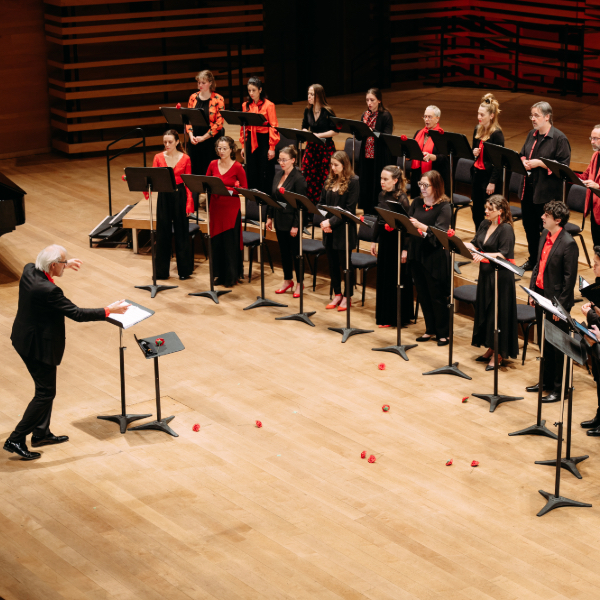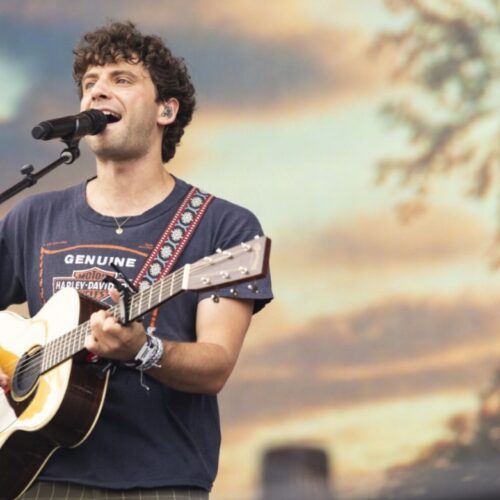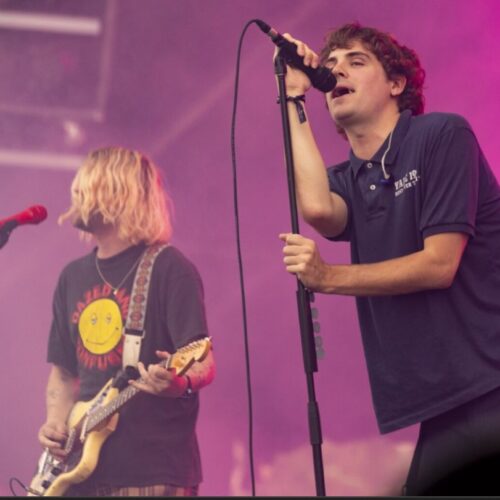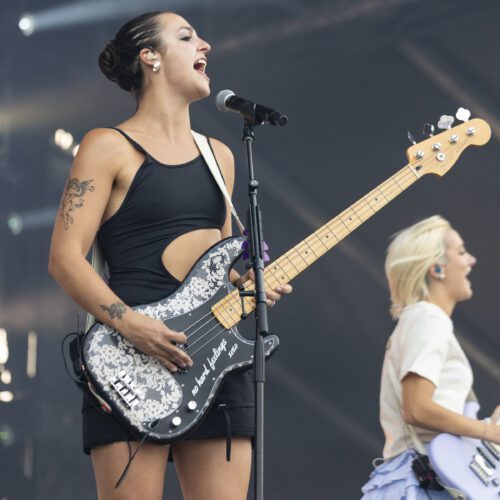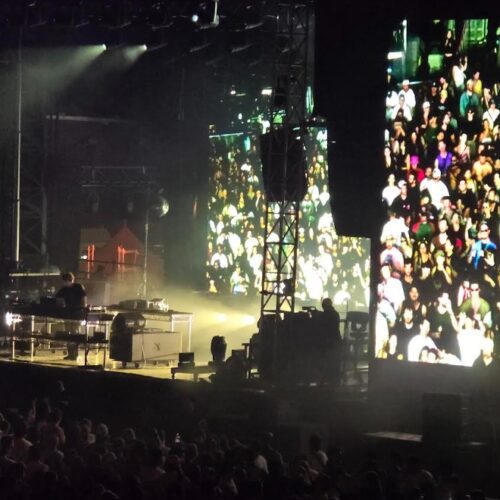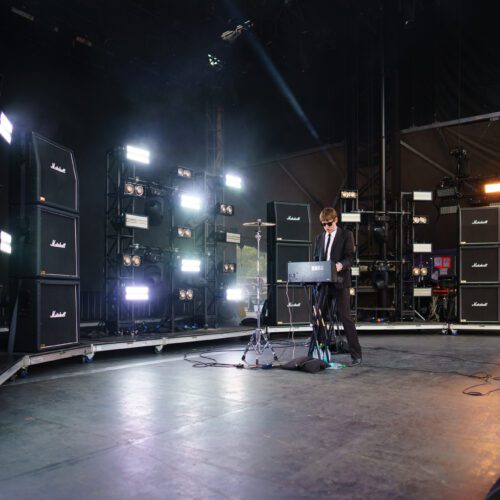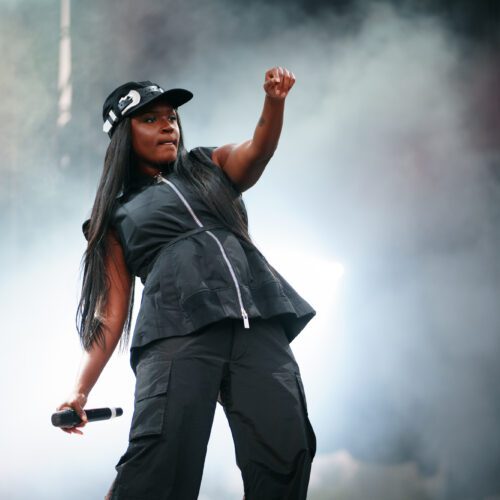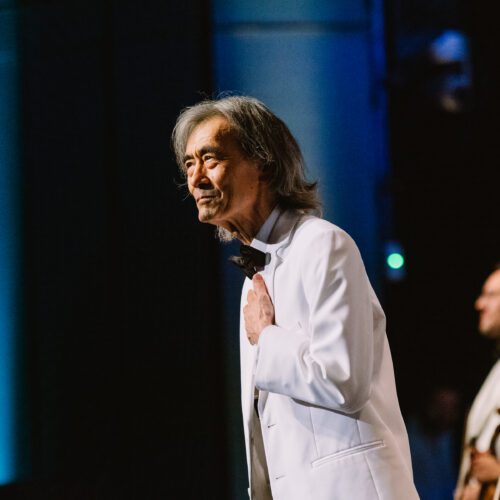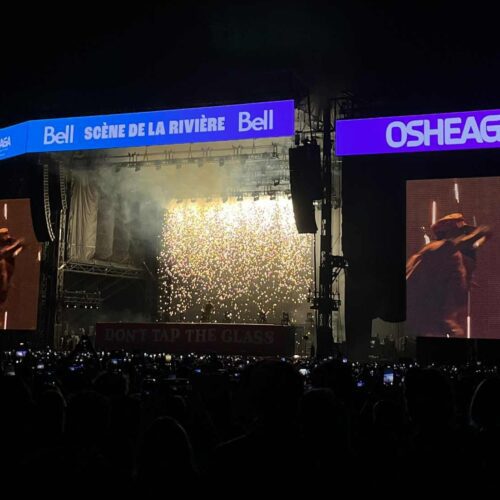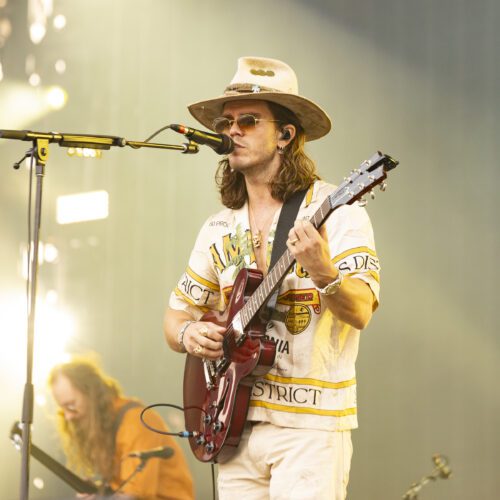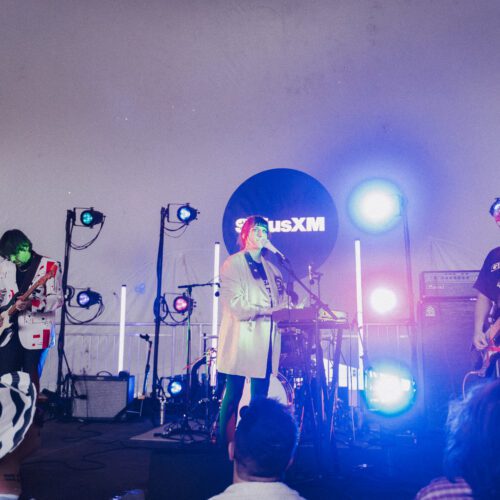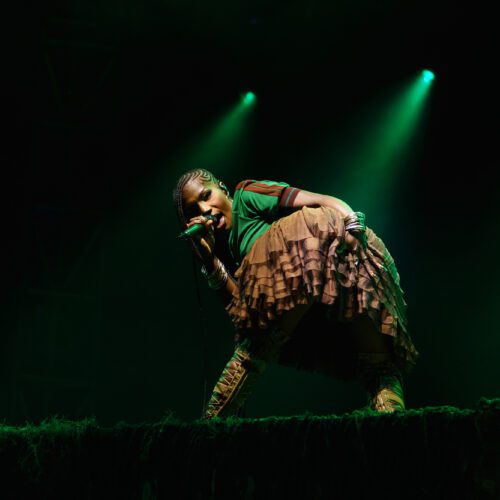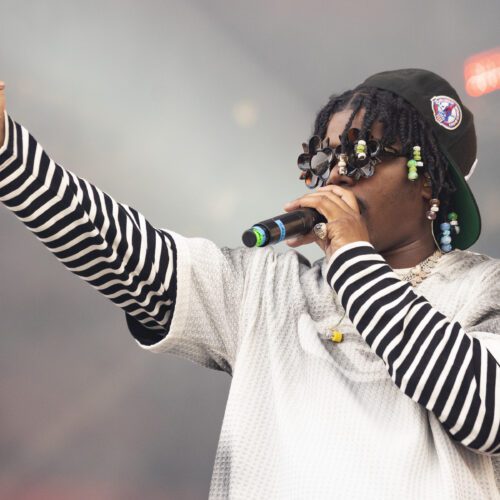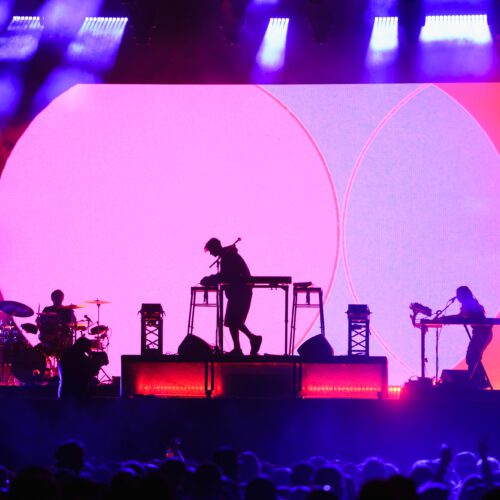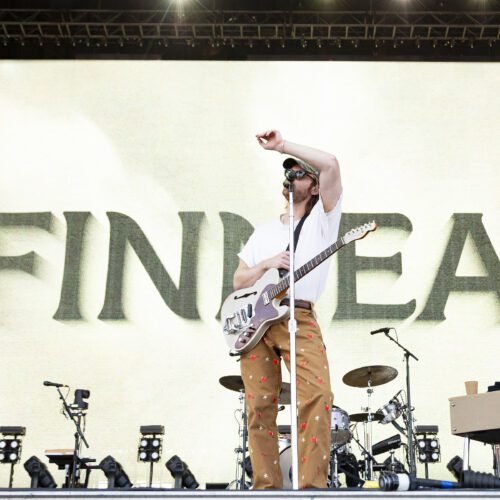The Maison symphonique was packed to the rafters for the first concert of the 2024-2025 season by Ensemble ArtChoral, conducted by Matthias Maute, with piano accompaniment in some pieces by Meaghan Milatz, “Discovery of the Year” at the last Prix Opus.
The premise of the concert, and of Maute’s theme of fallen leaves, was an escape into the autumnal Paris of the Belle Époque, as well as into the colors of Canadian autumn. Indeed, this concert was not all French chanson and melody. There was also Canadian choral music represented by composers Afarin Mansouri, Alice Ho, Beverley McKiver and Sandy Scofield. Of these, McKiver’s Dreamers’s Rock and Scofield’s The Sacred One are particularly noteworthy, as the themes of these pieces, rooted in their Aboriginal origins, were very telling.
The concert was divided into two symmetrical parts. Each began with pieces by Gabriel Fauré, whose death in 2024 marks the 100th anniversary of his death. This was followed by a piece performed by the Grand Chœur, an ad hoc ensemble of some one hundred choristers from fifty choirs in the Montreal region. The final parts of the concerts were once again performed by the singers of the Ensemble ArtChoral. The members of ArtChoral took to the stage in a procession to Fauré’sAve verum , led by Matthias Maute, entering simultaneously from the garden and courtyard sides of the stage, red roses in hand.
Among the only pieces specifically written for Faurean block choir, we were surprised in Madrigal by the conductor’s choice of staccato vocal articulation in the opening lines of Armand Sylvestre’s poem, in contrast to more legato interpretations generally heard. Understandably, this articulation responds to the piano accompaniment, provided here by, but despite a solid interpretation by the voices, the lyrical character of the text was diminished. Most of the Fauré works performed were solo melodies arranged for four accompanied voices. This treatment, which is a step up from the originals, gives a new dimension to the works and text, which are attractive but unevenly rendered. May, Butterfly and Flower and Dans les ruines d’une abbaye were among the most interesting. It’s also worth noting that, to our ears, the four-voice treatment meant that, at times, the intelligibility of the text was lost. The homogeneity of the ensemble’s timbre also had the perverse effect of giving some pieces a hushed, almost meditative quality, leaving little room for expressiveness. In contrast, Les Djinns, a poem by Victor Hugo which Fauré sets to music with a quasi-operatic musical treatment, was sharply precise, with a coherent and precise play of nuances. The menacing character of these evil geniuses from Arab mythology was palpable, from the murmurs initiated by the mezzos to the rumbling of the basses, culminating in a breathless vocal torrent that gradually fades to silence.
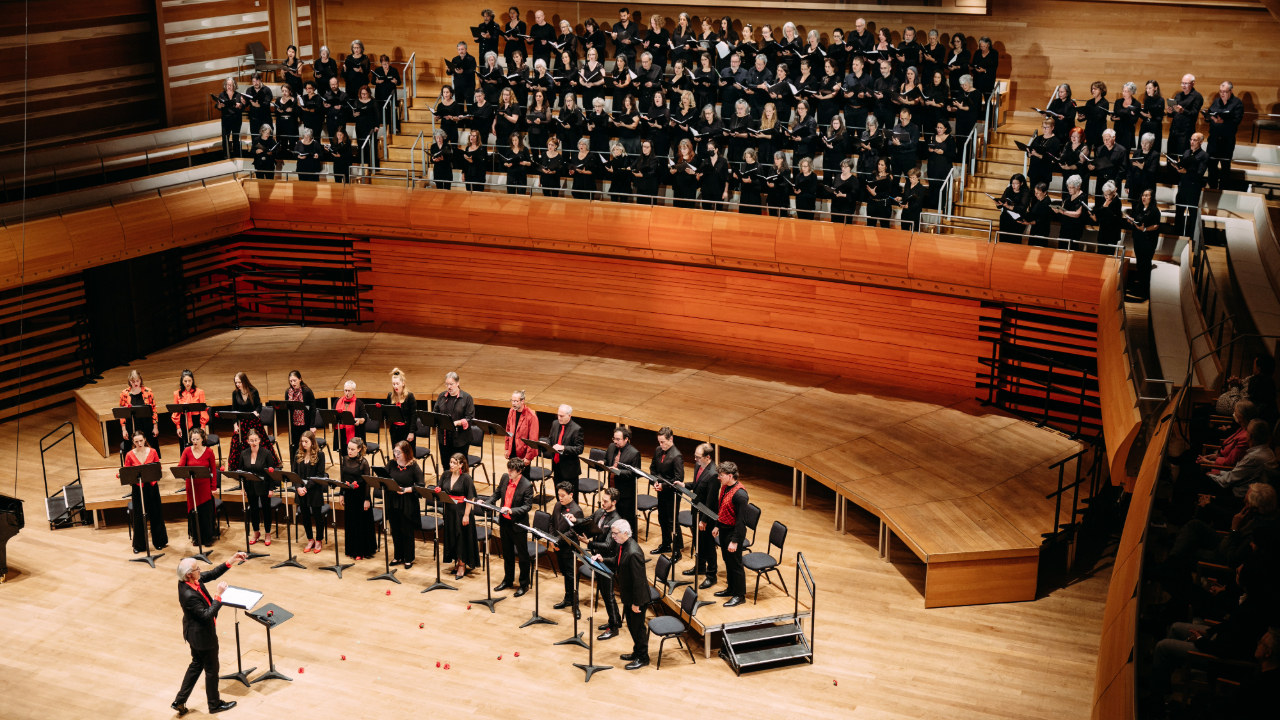
In the first part, the Grand Chœur performed two choral pieces: Upon your heart by Eleanor Daley and Terre-Neuve by Marie-Claire Saindon. Daley’s piece is in a very airy style, with close harmonies that the choristers performed well, despite perceptible differences in timbre between the voices. Saindon’s piece offered a similar harmonic texture, with a more dynamic varnish where passages of body percussion exemplified the cracking of ice. This was not the only element that cracked in this piece. A general confusion of rhythm and notes forced the conductor to restart the piece after a few seconds. Once they’d left, the result was highly appreciable. Calling on a choir made up of amateurs, however good they may be, inevitably entails elements of risk and unbalance in terms of the vocal aesthetics of the concert. But the commitment and determination of these singers, whose passion and love of choral singing are the driving force behind their performance, must be underlined. To find them in the first rows of the stalls singing Katerina Gimon’s All Together We Are Love is a perfect illustration of this honorable dedication.
After offering Joseph Kosma’s famous piece Les feuilles mortes, the Ensemble ArtChoral concluded its concert with an interpretation of songs by Édith Piaf, arranged by Jean-François Daigneault and William Kraushaar in contrasting stylistic approaches. Whereas Daigneault favors a textural, effect-oriented approach, notably in La foule, where the voices imitate the timbre of the orchestral accompaniment, Kraushaar focuses on the clarity of the text. His arrangement of the popular aria Dans les prisons de Nantes beautifully accentuated the modal character of the piece.
Despite a few minor hiccups in interpretation, Matthias Maute’s dynamism and conviviality, and the inventiveness of his program, like the piece that ended the evening, we have no regrets about attending this concert.
photos : Tam Lan Truong
